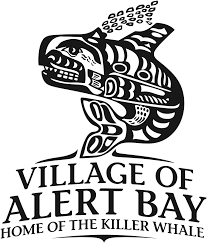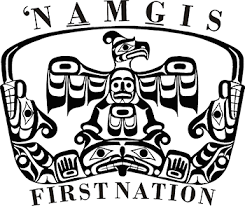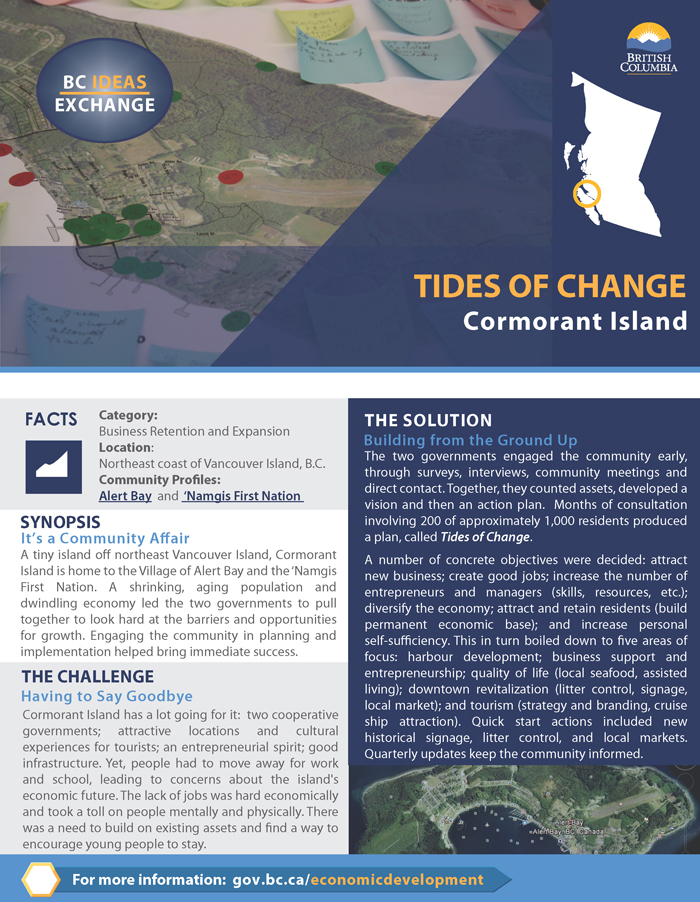Building on a Community's Assets to Create an Economic Development Strategy
Cormorant Island
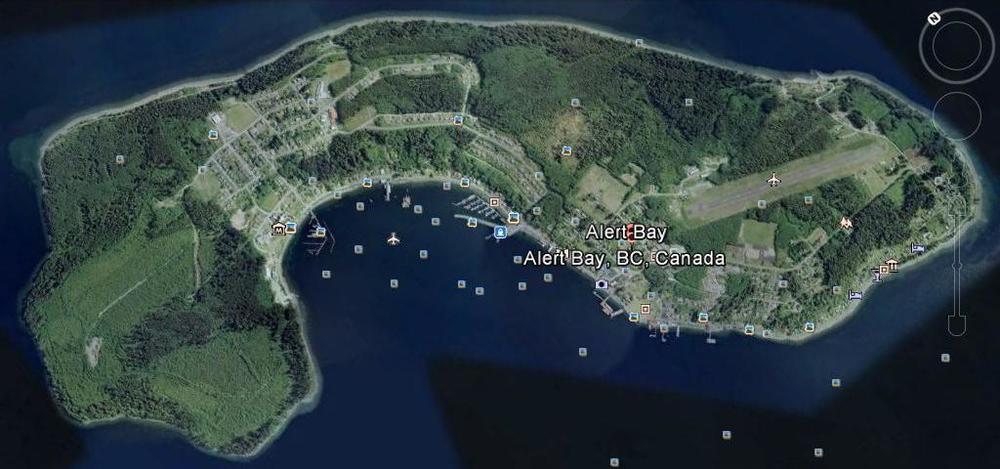
The Challenge: Having to Say Goodbye
Cormorant Island has a lot going for it: two cooperative governments; attractive locations and cultural experiences for tourists; an entrepreneurial spirit; good infrastructure. Yet, people had to move away for work and school, leading to concerns about the island's economic future. The lack of jobs was hard economically and took a toll on people mentally and physically. There was a need to build on existing assets and find a way to encourage young people to stay.
The Solution: Building from the Ground Up
The two governments engaged the community early, through surveys, interviews, community meetings and direct contact. Together, they counted assets, developed a vision and then an action plan. Months of consultation involving 200 of approximately 1,000 residents produced a plan, called Tides of Change.
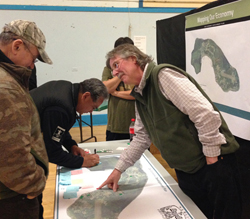 A number of concrete objectives were decided: attract new business; create good jobs; increase the number of entrepreneurs and managers (skills, resources, etc.); diversify the economy; attract and retain residents (build permanent economic base); and increase personal self-sufficiency. This in turn boiled down to five areas of focus: harbour development; business support and entrepreneurship; quality of life (local seafood, assisted living); downtown revitalization (litter control, signage, local market); and tourism (strategy and branding, cruise ship attraction). Quick start actions included new historical signage, litter control, and local market. Quarterly updates keep the community informed.
A number of concrete objectives were decided: attract new business; create good jobs; increase the number of entrepreneurs and managers (skills, resources, etc.); diversify the economy; attract and retain residents (build permanent economic base); and increase personal self-sufficiency. This in turn boiled down to five areas of focus: harbour development; business support and entrepreneurship; quality of life (local seafood, assisted living); downtown revitalization (litter control, signage, local market); and tourism (strategy and branding, cruise ship attraction). Quick start actions included new historical signage, litter control, and local market. Quarterly updates keep the community informed.
Benefits: Growing the Diversity
- A pilot program to support and train entrepreneurs was designed by Reconciliation Canada, with educators from SFU's Beedie School of Business RADIUS program, a resident coach recruited by Cuso International, training by Community Futures Mount Waddington and Vancity, and funding from Indigenous and Northern Affairs Canada. Ten proposals to create or grow businesses were selected for the first six-month program. Another is planned.
- Next steps for Tides of Change include harbour redevelopment, support for local artists and agriculture and capacity development. The BC Rural Dividend Program has approved funding the harbour initiatives, hiring an economic development officer, and planning for reuse of a historic nurses's residence.
Outcomes: Making the Quick Start
- The two governments collaborated to find new banking services to replace a credit union that had recently closed its local branch. Cormorant Island's detailed plan persuaded Vancity Credit Union to open its first rural branch. New banking services from Vancity include basic branch banking three days a week, and workshops and financial education for young people and entrepreneurs to increase financial literacy and develop business skills.
- Cormorant Island was able to present Vancity with a strong business case for providing banking services in a small rural area. Considering they are a financial institution, Vancity embraced the idea with a non-traditional mindset and were committed to making it work. Citizens are very grateful, as without a financial institution in the community, they would be in a very different position to where they are now. See the news release for more details.
- Other outcomes include: new signs for historic and cultural features and recreational trails; new green initiatives including solar power, new summer markets and a new tourism website
Lessons Learned: Leverage What You’ve Got
- Take stock of available assets and assess in relation to community vision and fill in the gaps
- Ensure all actions in the plan have a timeline and details about who, what and how to implement
- Hire a dedicated staff person or assign staff time to implement the plan
- Develop a steering committee of representatives from the two governments and members from the business community or residents to oversee the plan
- Make use of external resources and partners, for example banking institutions, levels of government, economic development associations and small business
- Include actions that all community members can take (more local purchasing, picking up litter, starting a business, selling arts and crafts)
Location: Cormorant Island, northeast coast of Vancouver Island, B.C.
Email: tidesofchange@alertbay.ca
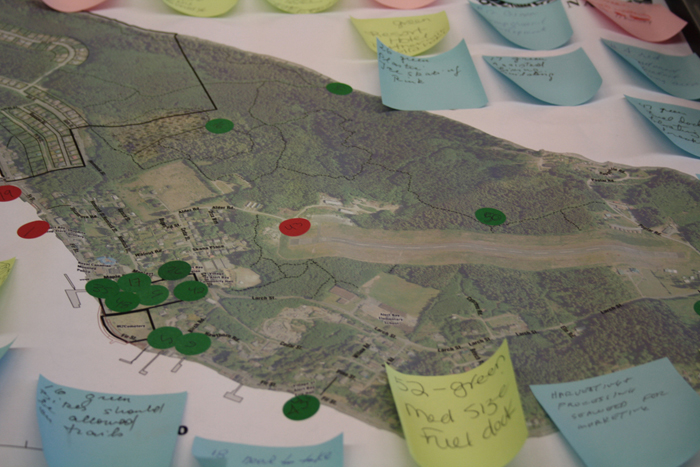
"We're planning a new economic path that combines established opportunities and new ones, built on shared values. A sustainable economy requires collaboration, and our history and relationship with the Village of Alert Bay provides a solid foundation to build on." (Namgis elected chief Debra Hanuse)

